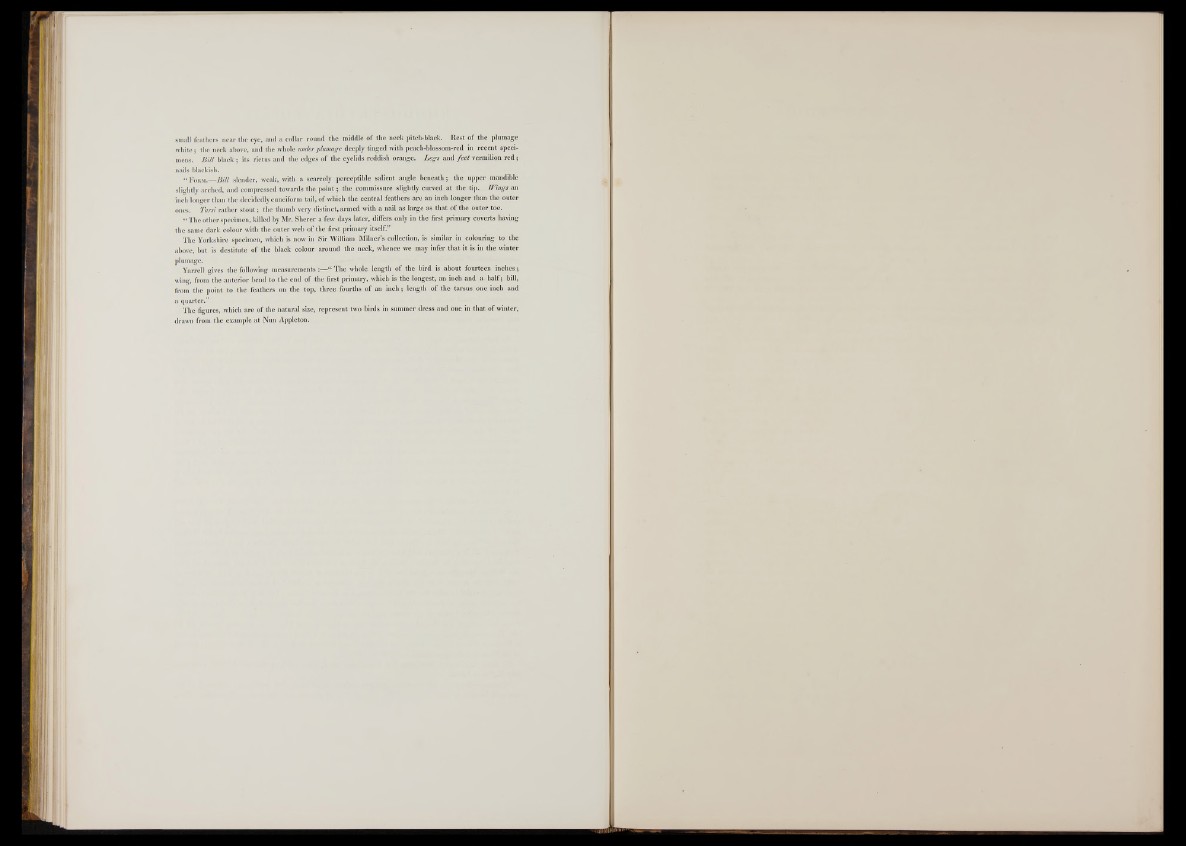
small feathers near the eye, and a collar round the middle o f the neck pitch-black. Rest of the plumage
white; the neck above, and the whole under plumage deeply tinged with peach-blossom-red in recent specimens.
B ill black ; its rictus and the edges o f the eyelids reddish orange. Legs and fe e t vermilion red;
nails blackish.
“ Form.— B ill slender, weak, with a scarcely perceptible salient angle beneath; the upper mandible
slightly arched, and compressed towards the point; the commissure slightly curved at the tip. Wings an
inch longer than the decidedly cuneiform tail, o f which the central feathers are an inch longer than the outer
ones. Tarsi rather stout; the thumb very distinct, armed with a nail as large as that of the outer toe.
“ The other specimen, killed by Mr. Sherer a few days later, differs only in the first primary coverts having
the same dark colour with the outer web o f the first primary itself.”
The Yorkshire specimen, which is now in Sir William Milner’s collection, is similar in colouring to the
above, but is destitute of the black colour around the neck, whence we may infer that it is in the winter
plumage.
Yarrell gives the following me a s u r eme n t s T h e whole length of the bird is about fourteen inches;
wing, from the anterior bend to the end o f the first primary, which is the longest, an inch and a half; bill,
from the point to the feathers on the top, three fourths o f an inch; length o f the tarsus, one inch and
a quarter.”
The figures, which are o f the natural size, represent two birds in summer dress and one in that o f winter,
drawn from the example at Nun Appleton.